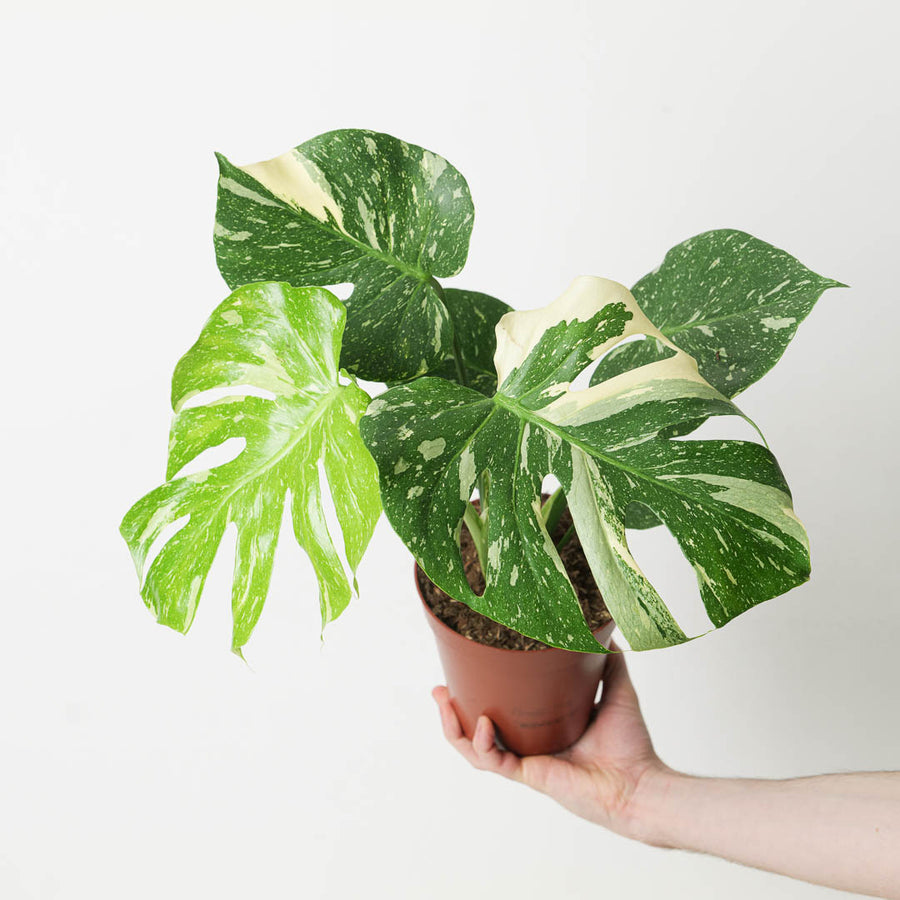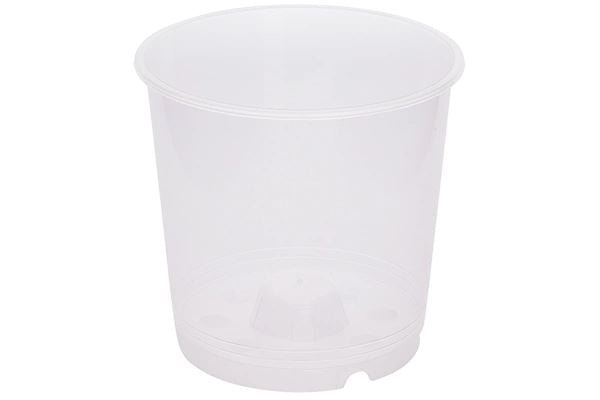Monstera
The Monstera genus belongs to the Araceae family and comprises around 50 species. These plants are native to the tropical rainforests of Central and South America, particularly found in Mexico, Panama, and parts of Brazil. In the wild, they grow as hemiepiphytic climbers, meaning they start life on the forest floor and later attach to trees, using their aerial roots to climb towards light.
Monsteras are loved by millions worldwide, not only for their striking, perforated leaves but also for their resilience and ease of care. They are known as one of the most forgiving houseplants, making them ideal for beginners and experienced growers alike. With proper care, they can thrive in various indoor environments, adding a lush, tropical touch to any space. Their adaptability to different light and humidity levels makes them a staple in homes, offices, and indoor gardens.
What Lighting Requirements do Monster prefer?
Monsteras thrive in bright, indirect sunlight, similar to their natural rainforest habitat. Direct sunlight can scorch their leaves, while too little light can stunt growth and prevent fenestrations. Ideally, place your Monstera near an east or south-facing window with sheer curtains for filtered light. If natural light is limited, consider using a grow light to supplement their needs.
Signs of Light Issues
-
Too much light: Scorched or faded leaves, dry patches.
-
Too little light: Small, non-fenestrated leaves, slow growth.
Does my Monstera Need to Climb?
As natural climbers, Monsteras benefit from a moss pole, trellis, or stake. In the wild, their aerial roots grip onto tree trunks, allowing them to grow upwards and access more light. A moss pole mimics this environment by providing a structure for the plant to attach to, resulting in larger leaves and better growth. Training your Monstera to climb rather than trail encourages healthier, fuller and more structured growth.
When to Water Monstera
Monsteras prefer consistent but moderate watering. Water when the top 5cm of soil is dry. This is typically once a week during the growing season and once every 10-14 days in winter. However, as Monstera comes in all leaf and pot sizes, it’s best to judge your watering schedule based on your home environment, and the specific Monstera variety.
Signs of Incorrect Watering:
-
Overwatering: Yellowing leaves, mushy stems, fungus gnats.
-
Underwatering: Dry, crispy leaf edges, wilting, slow growth.
What Humidity Level is best for Monstera?
Monstera species are typically found in the tropical rainforests of Central and South America, ranging from southern Mexico to Panama, Colombia, Ecuador, and Brazil. This means thrive in high humidity, ideally above 60%.
As a result of their natural habitat, Monsteras prefer warm temperatures between 18-27°C. They are not frost-tolerant, and temperatures below 10°C can cause damage. Keep them away from cold drafts, air conditioners, and radiators, as sudden temperature changes can stress the plant.
Repotting Monstera
Repotting your plants every 1-2 years, ideally in spring, ensures they have the space and fresh, nutrient-rich environment they need to grow and flourish. This mix is the perfect solution to give your Monstera a solid foundation and continued success, helping them grow strong, healthy, and vibrant.
Our Monstera & Philodendron Premium Potting Mix is the perfect blend for giving your plants the ideal start they deserve. Specially formulated for Monstera and Philodendron varieties, this peat-free mix is a refined version of our popular Jungle Mix, tailored to suit the finer, more delicate roots of these tropical plants.
The light, airy composition ensures excellent oxygen flow to the roots, encouraging healthy growth while preventing water-logging and root rot. The mix retains just the right amount of moisture, keeping your plants hydrated but never too soggy, so your Monstera and Philodendron thrive without the risk of overwatering.

Pruning Your Monstera
Pruning encourages bushier growth and removes damaged or excessive foliage. You can use clean, sharp scissors or pruning shears to:
-
Cut back leggy stems.
-
Remove yellow or damaged leaves.
-
Shape the plant for better aesthetics.
How to Propagate Monstera
Propagating Monstera is a rewarding and relatively simple process that allows you to grow new plants from a single cutting. Our favourite method for Monstera propagation is through stem cuttings, and with a little patience, you'll soon have a new plant to enjoy.
Here’s how to do it:
-
Choose Your Cutting: Start by selecting a healthy stem from your Monstera plant. Make sure to cut just below a node – this is the small bump along the stem where leaves, roots, or branches emerge. It's important that the cutting includes at least one healthy leaf and, ideally, an aerial root. Aerial roots are vital for the cutting to successfully root and establish itself in its new environment.
-
Prepare the Cutting: Using clean, sharp scissors or pruning shears, make a clean cut just below the node. This will allow the cutting to focus its energy on developing roots from the node. If your cutting doesn’t have an aerial root, don’t worry – Monstera plants can still develop roots from the node when placed in the right conditions.
-
Rooting the Cutting: Now it’s time to let your cutting take root. You have two main options for this part:
-
In Water: Place your cutting in a glass or jar of water, ensuring the node is submerged while the leaf stays above the waterline. Change the water every few days to keep it fresh and free of bacteria. In about 2-6 weeks, you should start to see roots developing.
-
In Moist Moss: Alternatively, you can plant the cutting directly into a small pot with moist moss. Keep the moss damp (but not soaking wet) and place the pot in a warm, bright spot with indirect sunlight. After a few weeks, gently tug on the cutting to check if it has started to root.
-
Transplanting: Once your cutting has developed a strong root system (you’ll see roots at least a few inches long), it’s time to transplant it into its own pot. Choose a pot with good drainage and fill it with well-draining potting mix, such as our Monstera & Philodendron Premium Potting Mix. Gently place the rooted cutting into the pot, ensuring that the roots are well spread out, then cover the roots with soil and lightly press down.
Common Issues When Growing Monstera
Yellowing leaves
Yellowing leaves are one of the most common issues Monstera owners face. This can be caused by overwatering, which leads to root rot, or underwatering, which results in dry, yellow leaves. Nutrient deficiencies, particularly a lack of nitrogen, can also contribute to yellowing. Additionally, if a Monstera is placed in low-light conditions, its leaves may become pale and weak. To address this problem, it is important to check soil moisture before watering and only water when the top two inches of soil are dry. Ensuring the pot has drainage holes and using well-draining soil will help prevent excess moisture from causing root rot. Feeding the plant monthly with a balanced liquid fertiliser during the growing season can prevent nutrient deficiencies, and placing the plant in bright, indirect light will keep it healthy and vibrant.
Browning Leaf Tips
Brown leaf tips can be another issue and are often caused by low humidity, inconsistent watering, or salt buildup from excess fertiliser. Monsteras thrive in humidity levels above 50%, so if the air is too dry, the leaf tips may become crispy. Underwatering can also lead to browning, as can the accumulation of fertiliser salts in the soil. To fix this issue, increasing humidity by using a humidifier or placing the plant on a pebble tray with water can be beneficial. Maintaining a consistent watering schedule and flushing the soil every few months to remove excess salts will also help prevent brown tips from developing.
Drooping Leaves
Drooping leaves can be a sign that a Monstera is either dehydrated, overwatered, or experiencing stress from environmental changes. A thirsty plant will droop before its leaves start to crisp up, whereas overwatering can cause root rot, leading to wilting and drooping. If a Monstera has recently been transplanted or moved to a new location, it may experience temporary drooping as it adjusts. To resolve this, watering thoroughly when the top two inches of soil are dry is key. If root rot is suspected, inspecting the roots and trimming any mushy or blackened sections before repotting in fresh soil can save the plant. Giving the Monstera time to adjust after repotting and avoiding frequent relocations can also prevent unnecessary stress.
Leggy Growth
Leggy growth, where the plant develops long, thin stems with few leaves, is usually a result of insufficient light. Monsteras need bright, indirect light to grow full and bushy. A lack of pruning can also contribute to this issue, as older or weak stems may continue to grow without producing healthy new leaves. The best way to fix leggy growth is to move the plant closer to a bright window with filtered sunlight or use a grow light if natural light is limited. Pruning leggy stems encourages bushier growth, and propagating healthy cuttings can help maintain a fuller plant. Supporting the Monstera with a moss pole will also encourage larger leaves and stronger stems.
Black Spots
Black spots on leaves can indicate a fungal or bacterial infection, often caused by high humidity combined with poor air circulation. Overwatering can also contribute to fungal growth, leading to black spots. To address this problem, removing affected leaves and improving airflow around the plant is essential. Reducing watering frequency and ensuring proper drainage will prevent excess moisture from encouraging fungal infections. Treating the plant with a fungicide or a diluted hydrogen peroxide spray can help eliminate bacteria and fungus.
Lack of Fenestrations
A common concern among Monstera owners is the lack of fenestrations, or splits, in the leaves. This can happen when a plant is still young, as immature Monsteras naturally do not have fenestrations. However, low light and nutrient deficiencies can also prevent leaves from developing their characteristic splits. Patience is key for younger plants, as fenestrations will develop over time with proper care. Placing the plant in a bright spot to encourage healthy leaf development and fertilising regularly with a balanced fertiliser will also promote split leaves.
Pests
Pests such as spider mites, mealybugs, and thrips can sometimes infest Monstera plants, especially in dry conditions. These pests often come from new plants or contaminated soil. Regularly inspecting the plant for pests by checking under leaves and along stems is important for early detection. Wiping down leaves with insecticidal soap or neem oil can effectively control infestations. Increasing humidity levels can deter pests, and isolating infected plants will prevent the spread of infestations to other houseplants.
Use our pest identifier tool to help further →
Monstera Growing Tips from our Horticulturists
To keep a Monstera thriving, it is beneficial to rotate the plant every few weeks to promote even growth. Dusting the leaves regularly will improve photosynthesis, ensuring the plant remains healthy. Repotting every two to three years will refresh the soil and encourage strong root development. By identifying and addressing these common Monstera problems, you’ll ensure your plant stays healthy for years to come.
Trending Monstera Varieties at GrowTropicals

Monstera Obliqua

Monstera Deliciosa Thai Constellation
Monstera plants can be enjoyable to care for, bringing unique foliage and character to your indoor space.
If you have any questions or need guidance, feel free to email us at hello@growtropicals.com. Our plant experts are always happy to help.
Browse our full range of Monstera and plant care essentials today →






